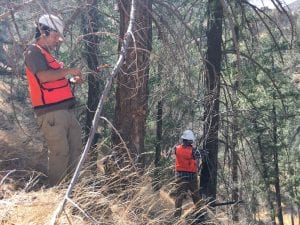California Channel Islands
As an undergraduate, I worked in Dr. David Ackerly’s lab studying ecophysiology of chaparral shrubs on the California Channel Islands. The data we collected suggested that island plants are buffered from regional drought exposure and may be more resistant to climate-change induced droughts than mainland relatives. I also proposed my own Senior Thesis Project to test the hypothesis that plants from islands had fewer defenses and were more palatable than plants from the mainland.
Marin Carbon Project
As a lab and field technician, I worked with Dr. Whendee Silver to study grasslands on dairy farms in Marin County, California. We determined that a one-time application of compost on grazing land provided considerable financial and environmental benefits. The compost application is affordable for farmers, and boosts the quantity and diversity of grass available for grazing. Additionally, The compost treatment sequesters carbon into the soil.
Luquillo Experimental Forest
Still working with Dr. Silver, I spent two years in Puerto Rico setting up and operating a network of automated soil sensors. I deployed over 100 sensors to obtain continuous soil oxygen, moisture, and redox potential measurements. I also maintained a set of automated gas flux chambers measuring background levels of greenhouse gas fluxes from soil to atmosphere. These data captured biogeochemical cycles before, during, and after severe drought and a major hurricane.
Bigcone Douglas-fir
At UC Santa Barbara, I worked with Max Moritz to study the effects of the Zaca Fire on bigcone Douglas-fir (BCDF). The Zaca Fire burned hundreds of BCDF stands, which are rare and endemic to southern California. I created a map of stands before and after the fire to quantify mortality. I also conducted field surveys to ground-truth my map, assess seedling recruitment, and develop a restoration plan.

